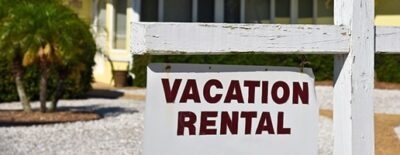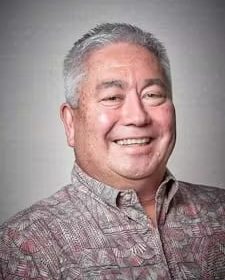Tourists still pouring in: Hawaii vacation rentals surging
As tourists continue to pour into Hawaii at the rate of between 25,000 to 30,000 people per day, the demand for Hawaii vacation rentals continues to surge. Despite new COVID-19 cases also on the rise, registering on average of around 400 to 500 new cases every single day, tourists are coming to the islands with and without their masks and lining up at restaurants and eateries without socially distancing as the state pulls back on group gatherings, most recently limiting indoor groups to only 10.
Today, the Hawaii Tourism Authority (HTA) issued the Hawaii Vacation Rental Performance Report for the month of July utilizing data compiled by Transparent Intelligence, Inc.
Hawaii vacation rentals statewide reported substantial increases in supply, demand, occupancy and average daily rate (ADR) in July 2021 compared to July 2020. However, in comparison to July 2019, vacation rental supply, demand and ADR were down while occupancy rose slightly due to a reduction in supply levels.
The Hawaii Tourism Authority (HTA) issued today the Hawaii Vacation Rental Performance Report for the month of July utilizing data compiled by Transparent Intelligence, Inc.
In July 2021, the total monthly supply of statewide vacation rentals was 592,900 unit nights (+49.3% vs. 2020, -34.5% vs. 2019) and monthly demand was 485,300 unit nights (+767.0% vs. 2020, -31.1% vs. 2019). That resulted in an average monthly unit occupancy of 81.8 percent (+67.8 percentage points vs. 2020, +4.0 percentage points vs. 2019) (Figures 1 and 2) for July, which was slightly lower than the occupancy of Hawaii’s hotels (82.4%).
The ADR for vacation rental units statewide in July was $251 (+27.3% vs. 2020, +20.9% vs. 2019). By comparison the ADR for hotels was $368 in July 2021. It is important to note that unlike hotels, units in vacation rentals are not necessarily available year-round or each day of the month and often accommodate a larger number of guests than traditional hotel rooms.
In July, legal short-term rentals were allowed to operate in Maui County and on Oahu, Hawaii Island and Kauai as long as they were not being used as a quarantine location.
In July 2021, most passengers arriving from out-of-state and traveling inter-county could bypass the State’s mandatory 10-day self-quarantine with a valid negative COVID-19 NAAT test result from a Trusted Testing Partner prior to their departure to Hawaii through the Safe Travels program. In addition, individuals who were fully vaccinated in the United States could bypass the quarantine order beginning July 8, 2021. There were no inter-county travel restrictions in July.
The data in HTA’s Hawaii Vacation Rental Performance Report specifically excludes units reported in its Hawaii Hotel Performance Report and its Hawaii Timeshare Quarterly Survey Report. A vacation rental is defined as the use of a rental house, condominium unit, private room in private home, or shared room/space in private home. This report does not determine or differentiate between units that are permitted or unpermitted. The legality of any given vacation rental unit is determined on a county basis.
Island Highlights
In July, Maui County had the largest vacation rental supply of all four counties with 223,100 available unit nights (+57.1% vs. 2020, -22.2% vs. 2019). Unit demand was 186,100 unit nights (+1,367.6% vs. 2020, -20.3% vs. 2019), resulting in 83.4 percent occupancy (+74.5 percentage points vs. 2020, +1.9 percentage points vs. 2019) with ADR of $282 (+23.6% vs. 2020, +19.6% vs. 2019). In comparison, Maui County hotels reported ADR at $618 and occupancy of 81.7 percent.
Oahu vacation rental supply was 151,400 available unit nights (+39.8% vs. 2020, -49.3% vs. 2019) in July. Unit demand was 120,200 unit nights (+445.5% vs. 2020, -49.8% vs. 2019), resulting in 79.4 percent occupancy (+59.1 percentage points vs. 2020, -0.8 percentage points vs. 2019) and ADR of $203 (+19.5% vs. 2020, +13.4% vs. 2019). Oahu hotels reported ADR at $259 and occupancy of 82.0 percent.
The island of Hawaii vacation rental supply was 132,800 available unit nights (+46.2% vs. 2020, -32.5% vs. 2019) in July. Unit demand was 110,300 unit nights (+670.5% vs. 2020, -18.4% vs. 2019), resulting in 83.0 percent occupancy (+67.3 percentage points vs. 2020, +14.4 percentage points vs. 2019) with ADR of $206 (+20.5% vs. 2020, +26.5% vs. 2019). Hawaii Island hotels reported ADR at $375 and occupancy of 85.3 percent.
Kauai had the fewest number of available unit nights in July at 85,600 (+53.0% vs. 2020, -30.5% vs. 2019). Unit demand was 68,700 unit nights (+889.2% vs. 2020, -28.6% vs. 2019), resulting in 80.2 percent occupancy (+67.8 percentage points vs. 2020, +2.2 percentage points vs. 2019) with ADR of $321 (+14.9% vs. 2020, +18.5% vs. 2019). Kauai hotels reported ADR at $369 and occupancy of 83.0 percent.




